In the following interview, Teresia Hazen answers questions by Addie Hahn, a writer who is also working towards her Child Life credential, about the Legacy Emanuel Children’s Hospital Garden, which won the American Horticultural Therapy Association Therapeutic Garden Award in 2000. Below are excerpts from the interview, and images of the garden by Max Sokol. To read the full interview, visit the Therapeutic Landscapes Network website.
Teresia Hazen, M.Ed., HTR, QMPH is the Coordinator of Therapeutic Gardens and Horticultural Therapy for Legacy Health System in Oregon.
“A Running, Hollering, Skipping, Playing Place: A Conversation with Teresia Hazen on the Legacy Emanuel Children’s Hospital Garden.”
AH: Could you briefly describe the design process that led to the creation of the Emanuel Children’s Hospital garden?
TH: We did our design work in 1996. Then it was a three-stage process to develop all this, between 1997-99. Two major elements we wanted to address in this garden for kids and their siblings were a therapeutic focus and a restorative focus, or unstructured, independent time. To develop our list of therapeutic requirements, we needed to involve the clinicians. And in these meetings, we needed to hear about the dreams, the aspirations and the clinical goals of each team. We had Physical Therapists, Occupational Therapists, Speech and Language Therapists, Child Life, Spiritual Care, Managers, Horticultural Therapists and our Landscape Architect. All of those people had very specific goals and needs for the garden setting.
The second reason we have the garden is to provide a restorative setting for every patient, visitor and employee 24-7. So we had to be thinking about some of the elements that were needed for that. One of those turned into the 3-5 niche spots, or bump-out areas where a small group can gather to socialize, provide emotional support or grieve together.
AH: What are a few of the ways the garden is used clinically now?
TH: Physical Therapists needed walking rails for adults and for children, as well as some inclines, because you have to learn to walk in settings like this first if you’re going to go back out in to community settings.
Speech and Language Therapists needed items that would lead and encourage children around the garden. So, having a curved pathway encourages them now to go, “What’s around that corner?” A dragonfly sculpture in a tree might be something to watch for and “tell us when you see it.” The dragonfly starts the communication task.
We needed places where kids could maneuver—inclines, declines and a variety of surfaces that they need to manage while working on mobility skills. Kids ride their trikes and scooters for therapy, and we even have a Seguay now that kids with vestibular disorders ride to work toward meeting their treatment goals.
AH: What do you suggest for hospitals that may not have the funds to hire a Horticultural Therapist, or where staff may at first be resistant to the idea of bringing a professional on board? Are there ways a Child Life Therapist or other staff member could slowly introduce staff to the idea?
TH: Any therapist can add nature-based activities. They could say, “We’re going to integrate nature into our programming.” Anyone can do that. Integrate what you can manage. Consider a 12’ X 12 niche. Do only what you can maintain, and maintain with quality year-round. Therapeutic gardens need to be four season environments.
AH: Can you talk about what you believe is behind the growing interest in incorporating ‘healing gardens’ or smaller-scale, natural elements into hospitals and other healthcare environments?
TH: Programs everywhere are looking for cost-effective ways to help client therapeutic programs do their work most efficiently and effectively. We’re all working leaner these days–a reflection of the economic setting. These gardens provide choices for all therapeutic programs to help patients connect in whatever ways they need to to aid rehabilitation and recovery and discharge as soon as possible. These gardens are a coping resource and if well designed, can assist patients in their treatment and recovery.
We can also provide that kind of care and honoring even to families that have a baby or a child who is in hospice. The clinical team has assisted parents in supporting the child’s death in the garden. Two nurses will come with the parents. Parents initiate this request and they want their child to experience the fresh air or the sunshine before they die. Nature is a place of spirituality for many family groups.
Addie Hahn is a freelance writer who is also working on obtaining her Child Life certification. She lives in West Linn, Oregon and can be reached at addiethahn@me.com.
Max Sokol is a freelance photographer based in Portland, Oregon. He can be reached at maxsokol@mac.com
Many thanks to Addie, Max, and Teresia for this excellent post! To read the full interview, visit the Therapeutic Landscapes Network’s References page.
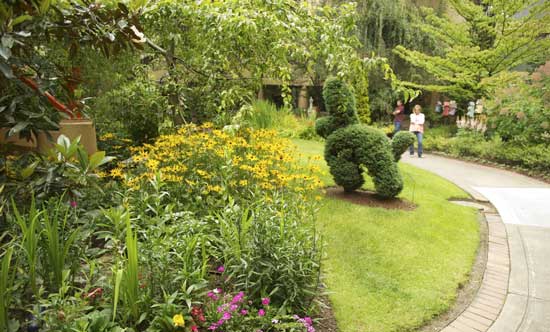
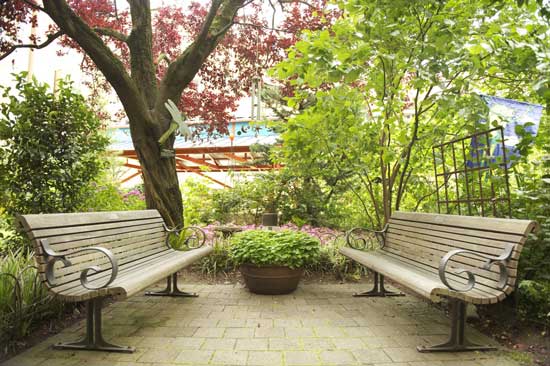
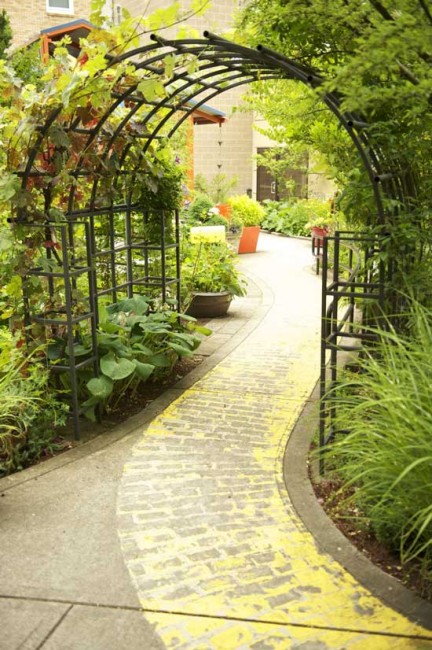
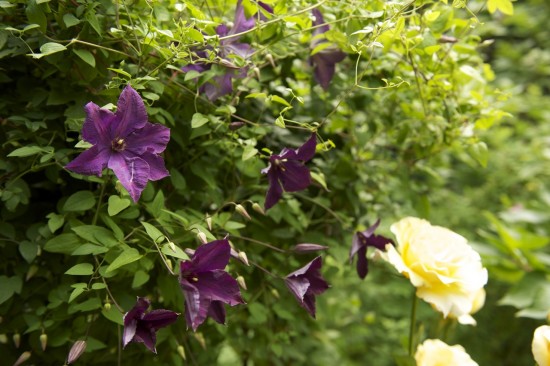
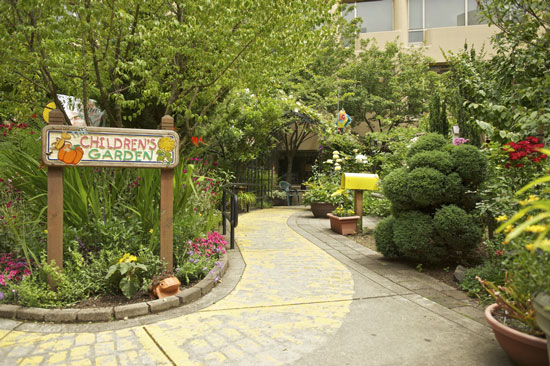




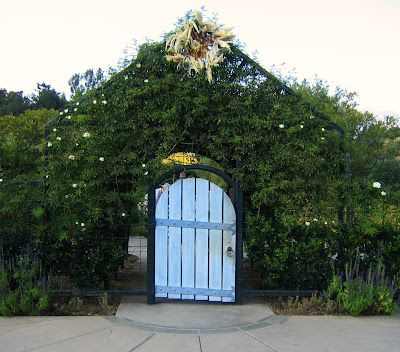 This door, and the footprints leading up to it, say “this place is for kids!”
This door, and the footprints leading up to it, say “this place is for kids!”














